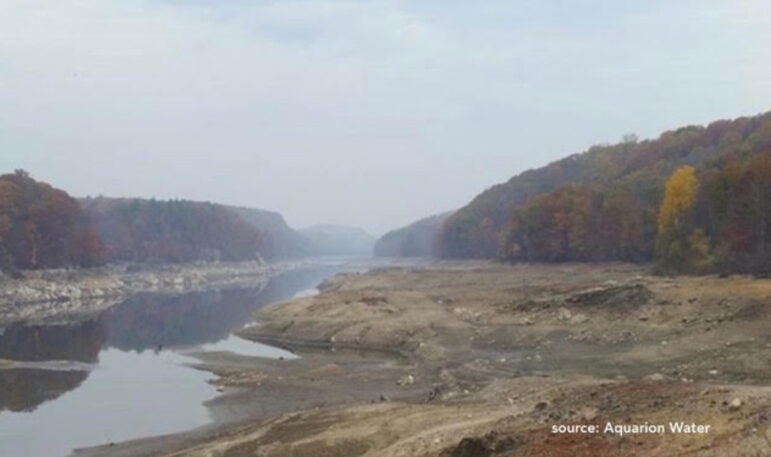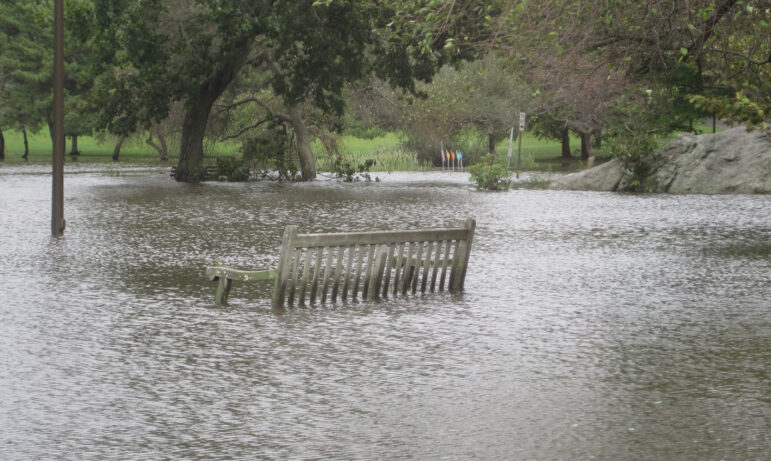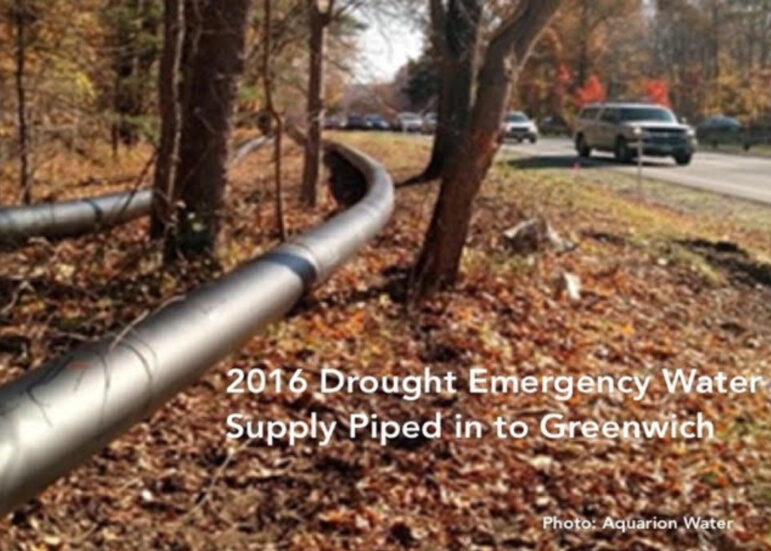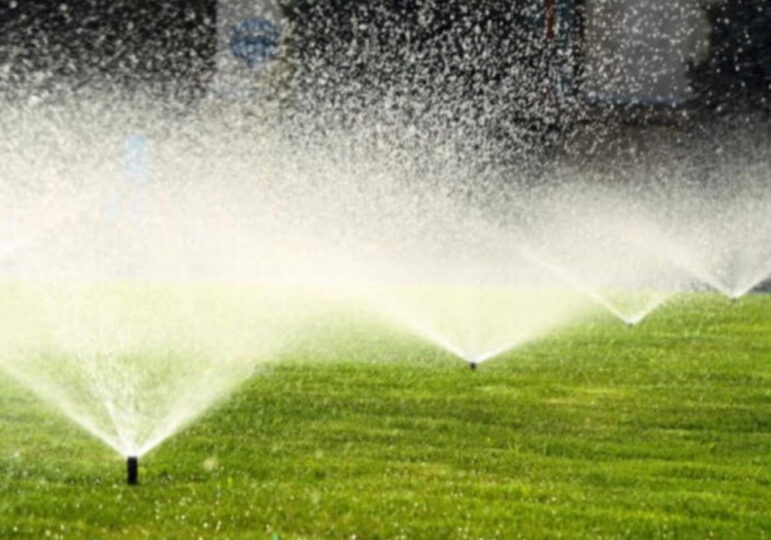This is the third article in the Greenwich Sustainability Committee’s “One Water” weekly series.
Written by Elizabeth Dempsey, a member of the Land and Water Sector of the Greenwich Sustainability Committee.

The previous article in our series, Our Changing Connecticut Climate, explained how climate change impacts our natural water systems. Do Greenwich residents also play a role in our water woes?
We see irrigation ordinances that focus on conserving water. At the same time, we also face new costs with flood prevention and surface water run-off.
Do we have too much water and too little water? The answer is yes to both, and highlights the need to properly manage this interconnected and finite resource.
Whether you use Aquarion water or a private well, our water reserves are a shared, “one water” system, that needs careful stewardship.

Water in Greenwich – How has it Changed and Why be Concerned?
In Greenwich, Aquarion supplies water to homes south of the Merritt or approximately 88% of our residents. The remaining 12% of residents, are North of the Merritt and are supplied by private wells. Aquarion sources our water largely from the Bargh Reservoir in Stamford. This reservoir is shared spanning both Connecticut and New York as part of the Mianus River watershed. Water from the Bargh is piped into our two reservoirs, the Rockwood and Putnam Reservoirs which act as holding and transfer tanks. The Putnam Treatment plant cleans the water which is then dispersed to Greenwich and Stamford with a small portion sent to supply Rye, Ryebrook and Port Chester.
Our Greenwich reservoirs are generally full by spring. However, the large summer demand for water, coupled with climatic changes have meant that our reservoir system, alone, can no longer sustain us through our increasingly hot and dry summers because of our penchant for extensive lawns and irrigation.
Why Conserve Water?
In 2016, southwest Connecticut faced the real possibility that it could run out of fresh drinking water during a severe drought. Our fresh water aquifers are being depleted because water is not reaching down to the lower subsurface levels. The New England region is facing the third highest rate of warming on our planet underscoring a 2017 EPA report that found Connecticut summers will be increasingly longer, hotter, and drier. While our total annual precipitation may still be abundant in quantity during the spring and winter, it may come more sporadically in the form of intense downpours. These deluges can cause erosion, destructive flash floods, and excessive run-off, the largest source of pollutants in our water stream. Unfortunately, Greenwich’s reservoirs are simply not large enough to capture excessive periods of rain for future summer shortfalls; in such cases the excess is lost to Long Island Sound, failing to infiltrate and recharge our ground waters and aquifers. These periods of excess rain will get longer, as will periods of drought. Rising temperatures will extend the growing season putting further stress on our aquifers.
Greenwich Water Demand – Highest in Connecticut despite Regulations
Did you know Greenwich is by far the largest water user in Connecticut? Despite this, 50% of our Greenwich population is considered “ultra-low water users. ” This disparity is due to excessive lawn irrigation by a small percentage of our residents. According to USGS scientist, John Mullaney, the larger the lot size in Greenwich, the more outsized the irrigation water use. During the summer, the top 1% of single-family homes used almost 10% of our entire supply. The top 25% of water users use almost two thirds of our water supply. From late spring to early fall, Greenwich uses triple the amount of water per capita at 177 gallons per day as compared to Stamford (50 gpd) and the national average (63 gpd).


Excess Irrigation Exhausts our Aquifers Requiring Outside Supply
The 2016 drought was severe. At one point, Aquarion had only a 68-day supply in our reservoir and was unable to predict if the drought would extend into the fall and winter. Emergency supply pipes were placed along the Merritt Parkway and some private wells went dry. To remediate, Greenwich enacted a ban and later, a permanent two day-per-week irrigation ordinance for both Aquarion customers and private well users. Last summer, in 2020, we experienced a drought more intense than the one in 2016. However, the irrigation ordinance worked well and provided us with more reserves (see chart) despite its severity. Greenwich used 173 million gallons less in 2020 than in 2016. The two day-per-week ordinance has another benefit. It encourages hardier lawns and plants, as fewer but longer watering sessions encourages deeper rooting and reduces surface run-off and evaporation.

Group Effort to Save Our Water Supply
The town irrigation ordinance is a great step, but water demands for southwest Connecticut are expected to almost double by 2050 according to CT DOT. To address our current and future demands, Connecticut policy makers took three steps to address water concerns. First, to reduce the impact of climate, development, and population related demands, Aquarion will be required to keep our reservoirs at higher levels, at a “15% margin-of-safety,” to ensure we do not run out of water during a drought. This additional supply cannot come at the expense of our downstream watersheds. The second policy addresses this and requires water companies to increase downstream water releases, to protect the health of our rivers, streams and natural ecology which has suffered with low flow or no flow at all. Lower flows create shallow water which can warm in dry periods killing fish and other aquatic life. The third policy change was the passage of the State Water Plan that includes the doctrine “Water is held in the Public Trust.” This principle requires the state to protect Connecticut water, first and foremost, for the best interests of Connecticut citizens, as opposed to outside stakeholders or profit. To address our excess demand for irrigation and to meet these new state requirements, Aquarion will have to make a costly and permanent diversion from the Housatonic River wells in the Bridgeport area allowing more water to flow to the southwest corner of Connecticut in a shared network called the Southwest Regional Pipeline. Ultimately, our water use affects all rate and tax payers, further highlighting the concept that water is a shared resource with shared impacts.
Greenwich can feel that some progress was made with the irrigation ordinance. However, last summer’s usage numbers showed that outdoor water use continued to creep upward since the restrictions in 2016. With further impacts from real estate development and climate change likely to continue to alter our landscape, we need to be proactive in restoring our aquifers by keeping irrigation to the minimum amount required. Water conservation practices remain the most effective and commonsense approach to protecting our natural resources and developing the climate resilience that Connecticut needs today.
What Can You Do to help? Follow irrigation rules (max two times/week, at night, only June through September) supplement with a rain barrel, use native and drought resistant species, and add smart water technology to your irrigation system, and consider a smaller lawn footprint.
Next in Our Series: “The Low Down on Run-Off – Keeping Waters Clean”
See also:
Our Changing Connecticut Climate: A Water Story
March 29, 2021
One Water. Shared: Greenwich Within the Long Island Sound Watershed
March 21, 2021